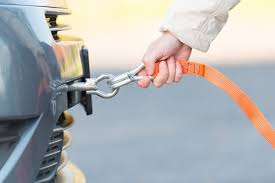Finding yourself in need of a tow rope can be an intimidating situation, especially if you are unprepared and unfamiliar with this essential piece of equipment. Whether it’s for recreational use, such as towing water skiers or boats, or for rescuing a vehicle that has become stranded, the right tow rope can make all the difference.
Understanding the basics of tow ropes, their different types, materials, strengths, and the safety considerations is essential for making an informed purchase. This guide will provide you with all the necessary information to choose the perfect tow rope for your needs, ensuring safety and effectiveness during use.
Types of Tow Ropes
There are various types of tow ropes available on the market, each designed for specific applications. These include flat straps, round slings, snatch straps, and kinetic recovery ropes. Flat straps are typically used for light-duty towing and are easy to store. Round slings offer a higher load capacity and are preferred for heavier towing needs. Snatch straps are designed with elasticity for recovering vehicles from difficult situations like mud or sand. Lastly, kinetic recovery ropes provide a smooth towing experience thanks to their dynamic properties.
Material and Build Quality
The material of a tow rope determines its strength, durability and suitability for different environmental conditions. Nylon and polyester are common materials, with nylon providing high strength and elasticity, making it ideal for heavy-duty and recovery operations. Polyester, on the other hand, is less stretchy and better suited for lighter, steady towing. It’s crucial to check the build quality, including stitching and splice work, to ensure the rope can handle the stress of towing without failing.
Break Strength and Load Capacity
One of the most critical factors to consider when choosing a tow rope is its break strength, which is the maximum force the rope can withstand before breaking. It is essential to select a rope with a break strength that can handle more than the weight of the vehicle or object being towed. Additionally, the working load limit (WLL) – typically a third or a fifth of the break strength – should be factored into your decision, as this represents the maximum safe load the rope should be used for under normal conditions.
Length and Thickness
The length of your tow rope is another important consideration. A rope that is too short could result in issues with maneuverability, while one that is too long could be difficult to manage and could become entangled. The thickness of the rope also influences its usability and storage. Generally speaking, a thicker rope will have a higher load capacity but will require more storage space and may be bulkier to handle.
Connectors and Hooks
Tow ropes either come with hooks or eyelets for attaching to the towing and towed vehicles. Hooks can offer convenience but need to be made of high-quality materials and secured properly to prevent detachment during towing. Eyelets, usually reinforced with protective sleeves, provide a more secure attachment when used with shackles or other secure linking devices.
Weather and Environmental Conditions
Consider the environmental conditions in which you will use your tow rope. Ropes made for marine use must resist UV damage and be waterproof to prevent weakening. For off-road activities, look for abrasion-resistant ropes that can withstand contact with rough surfaces without degrading. Additionally, the rope’s resistance to chemicals or oils can be a factor if you’re using it in a context where these substances are present.
Safety Factors and Precautions
Total safety must be prioritised when using a tow rope. Always inspect the rope before use for any signs of wear, tears, or defects. Ensure that all users are aware of safe towing practices, such as avoiding sudden tugs, which can cause the rope to break or the towed vehicle to lurch uncontrollably. Proper storage is also paramount; keep the rope clean, dry and away from sharp edges or high temperatures that could damage its integrity.
read more : The Rise of Micro-Betting: Where Every Moment Is a Game
Compliance with Standards
Check for compliance with relevant safety standards or certifications when purchasing a tow rope. These standards ensure that the product has been tested and meets certain quality and safety benchmarks.
User Experience and Reviews
Finally, consider the experiences of others who have used a particular tow rope. Online reviews and recommendations can shed light on the rope’s durability and performance in real-world settings. Furthermore, taking advice from tow professionals or enthusiasts can provide insights that are not evident in product descriptions alone.
Conclusion
Choosing the right tow rope need not be an overwhelming task. By considering the type of rope, material, strength, length, and safety features–and understanding how they relate to your specific uses and conditions–you can make an educated choice that ensures safety and efficiency. Always ensure that your chosen tow rope meets the highest standards of quality and safety, and that it is used in accordance with best practices to prevent accidents or damage.
By equipping yourself with the correct information and a dependable tow rope, you’ll be well-prepared for both planned activities and unforeseen emergencies requiring a tow. Whether you’re an adventure seeker, a water sports enthusiast, or simply looking to enhance your vehicle’s emergency preparedness, the right tow rope is a crucial tool in your arsenal.

